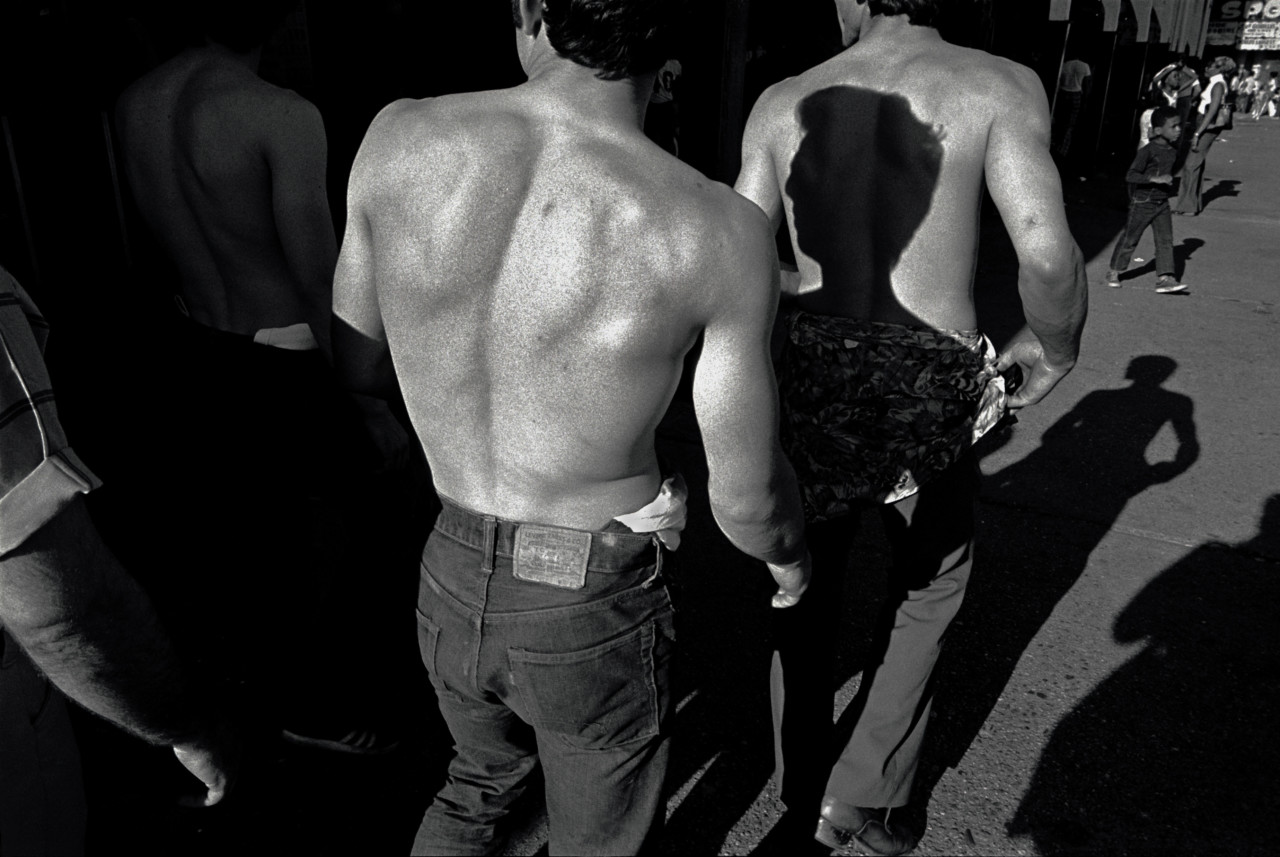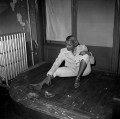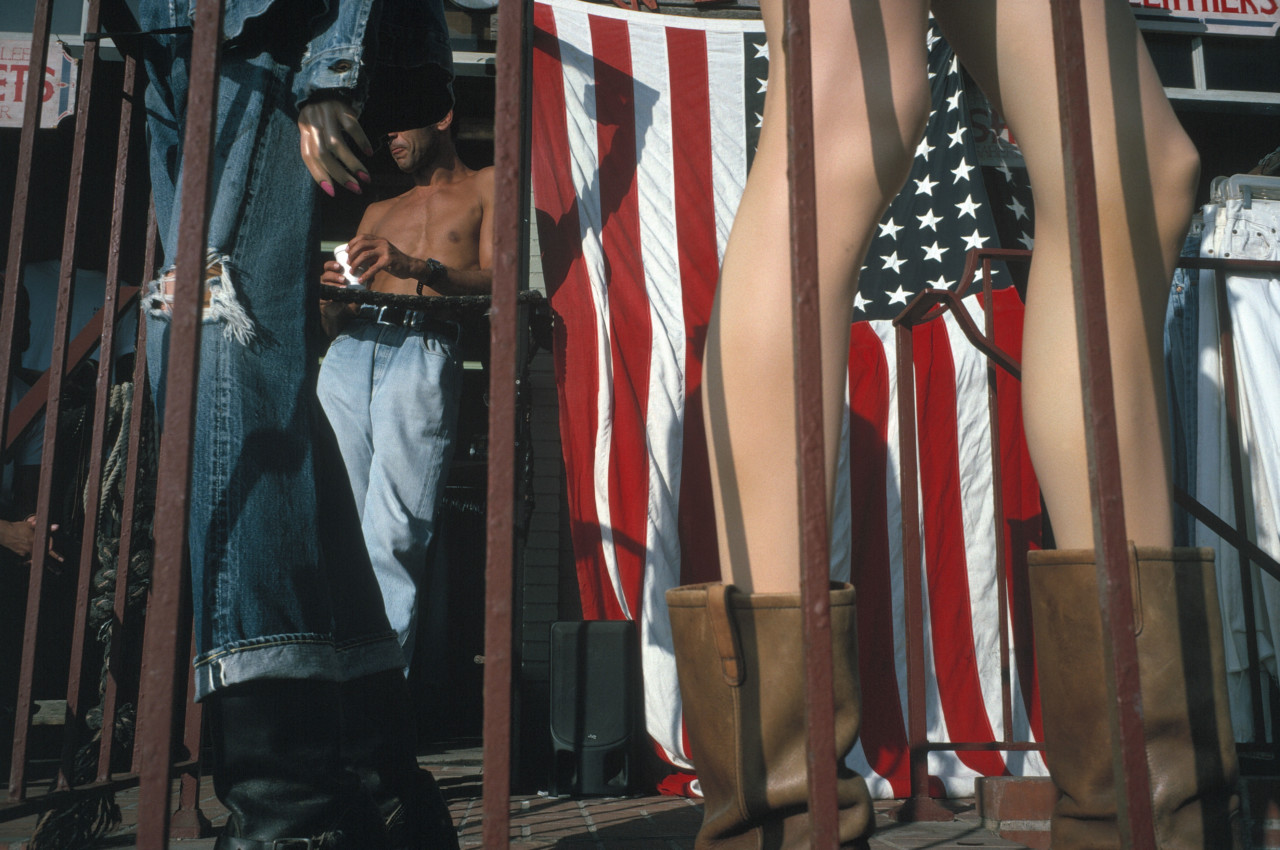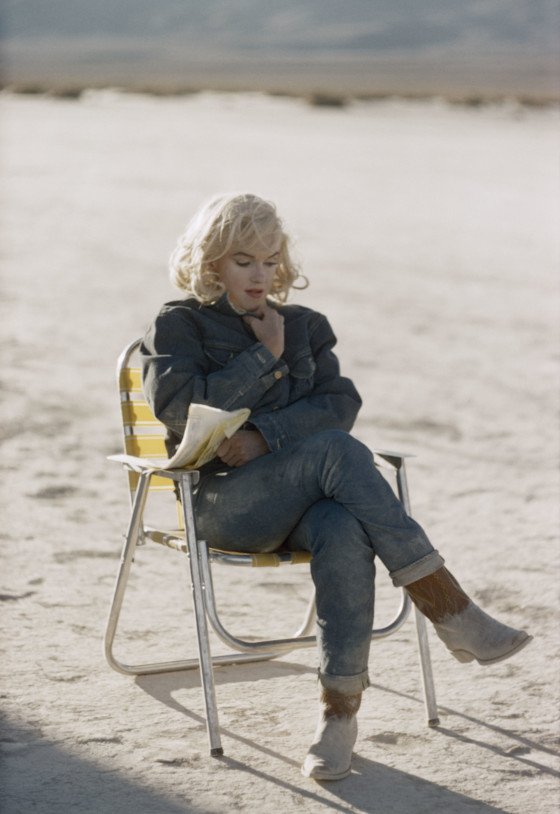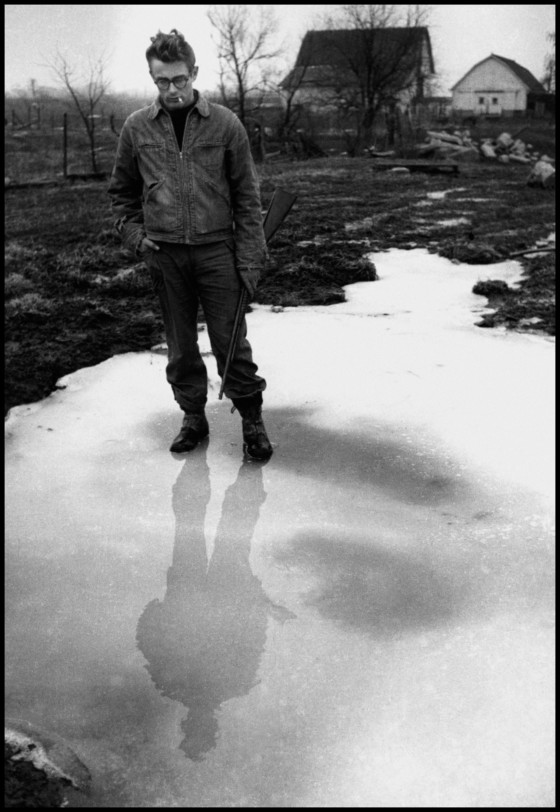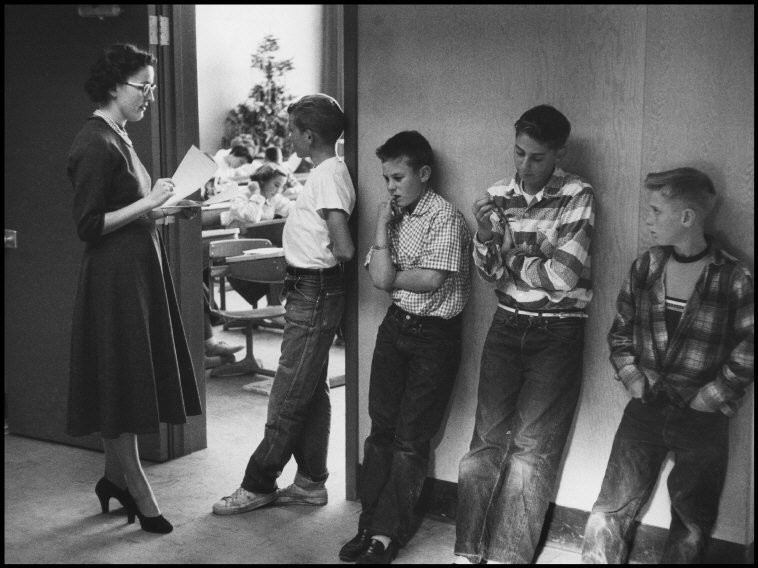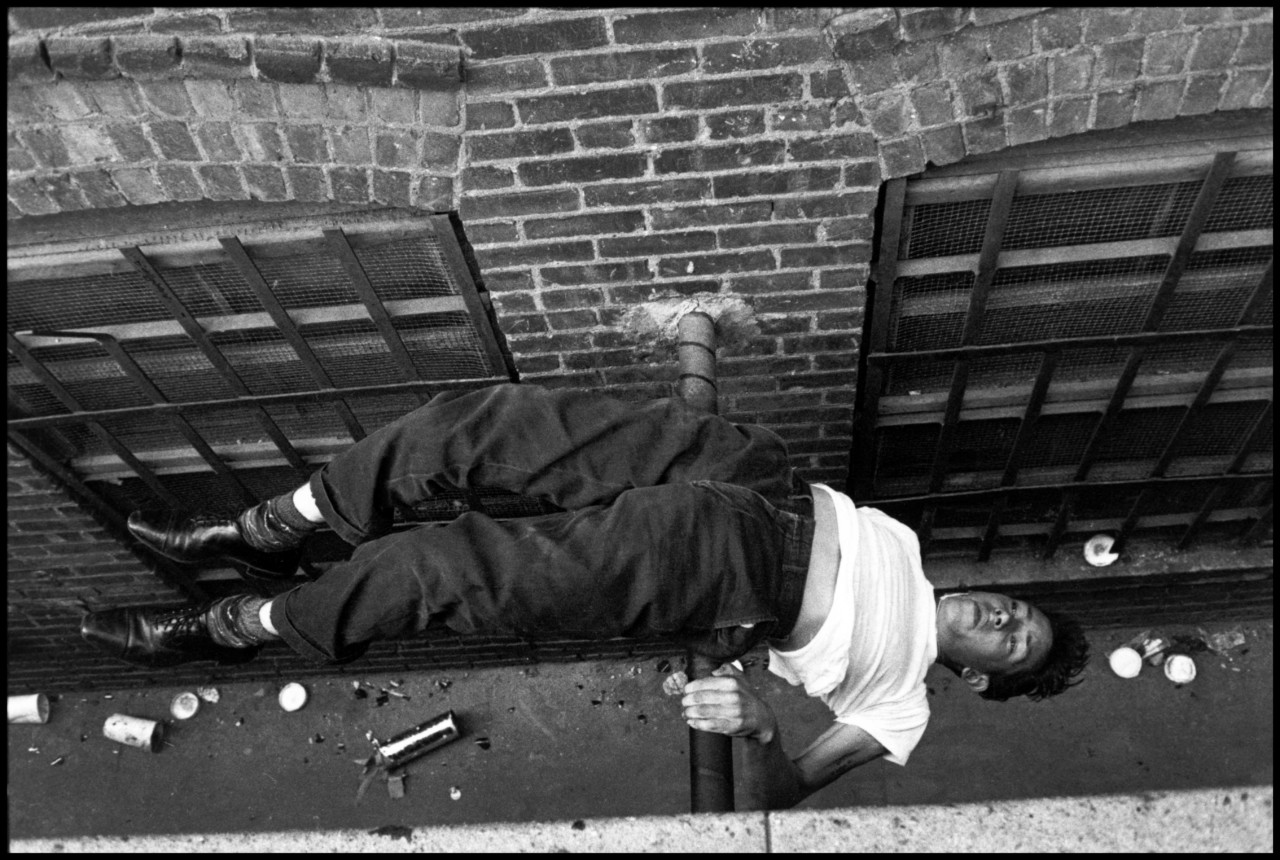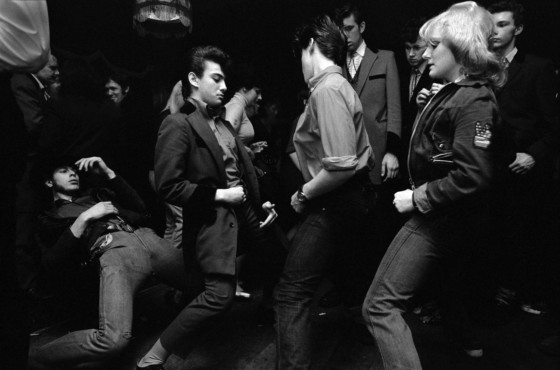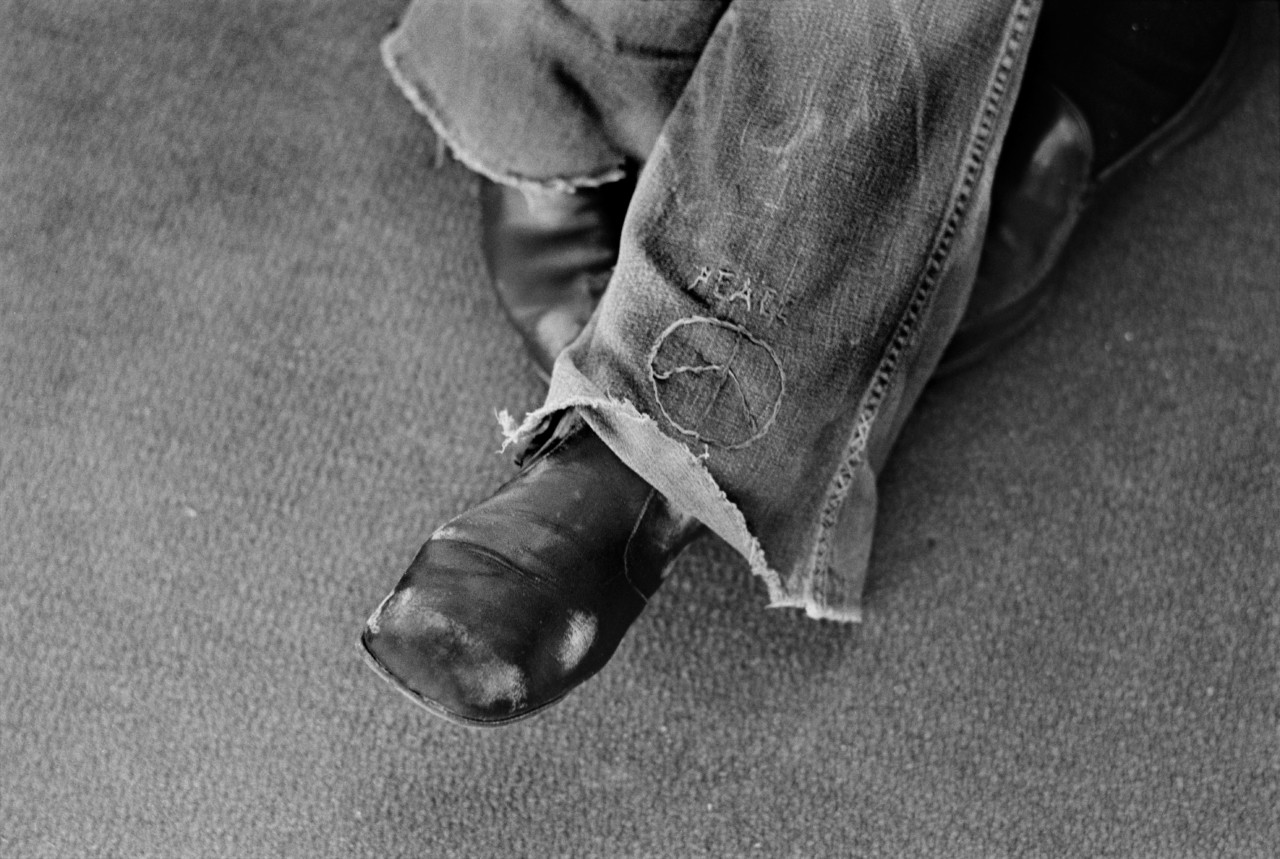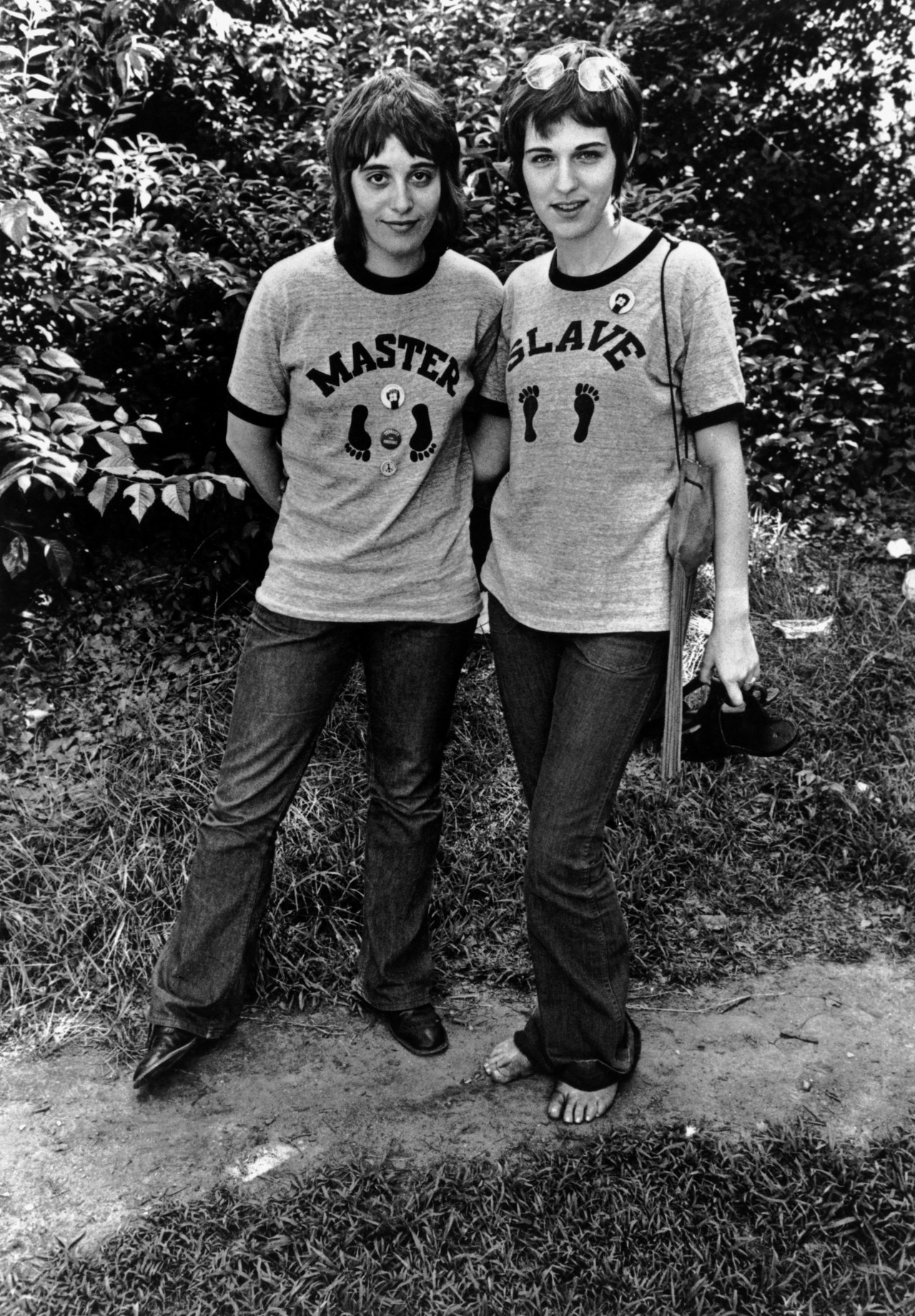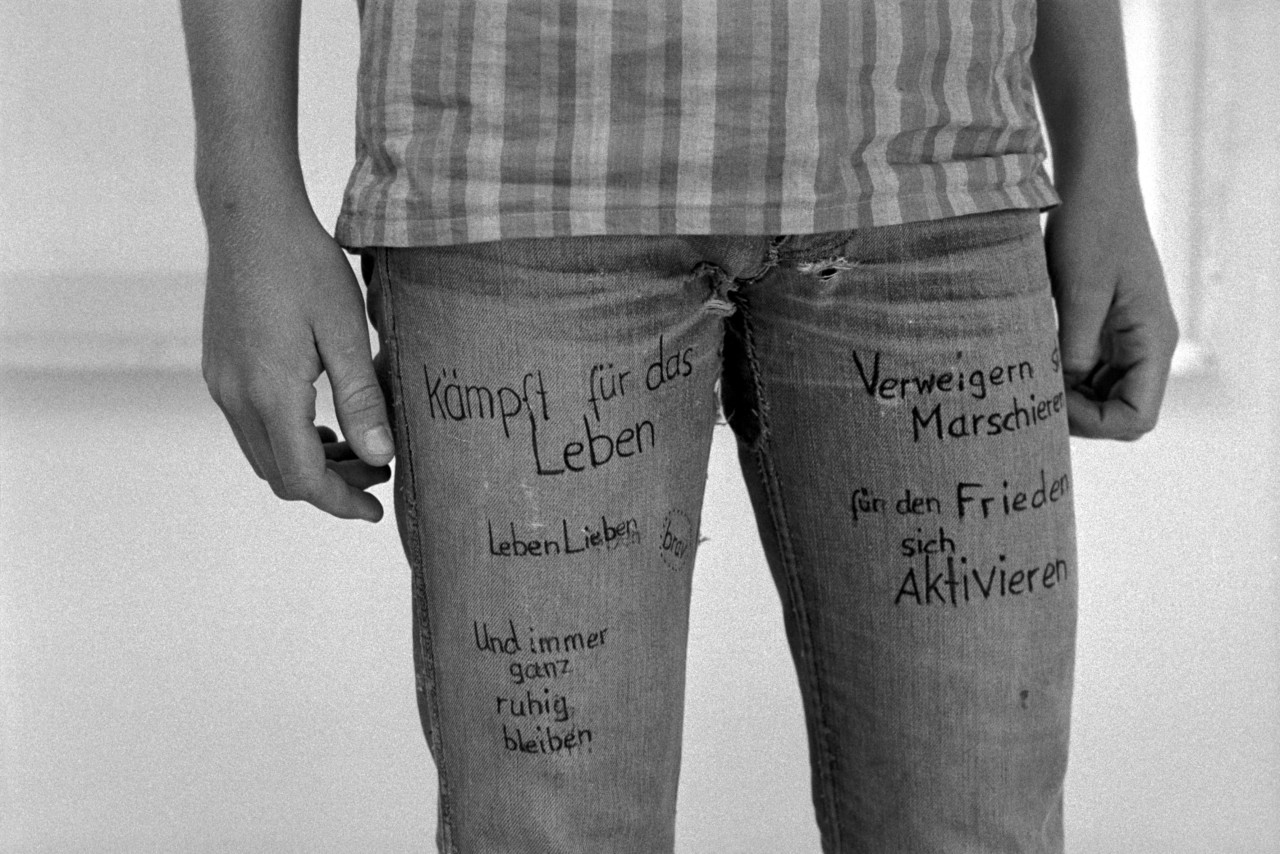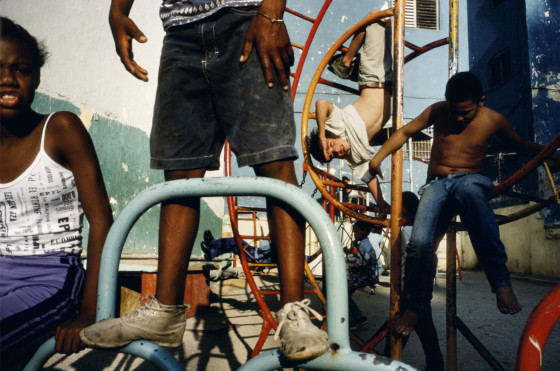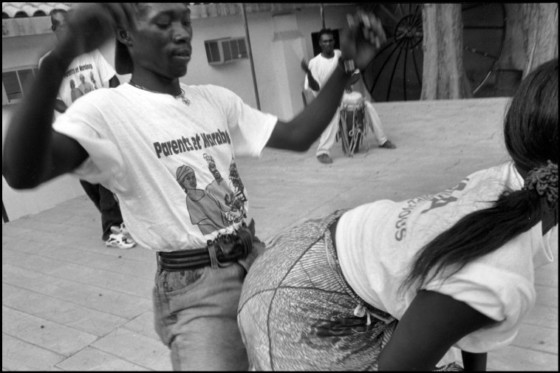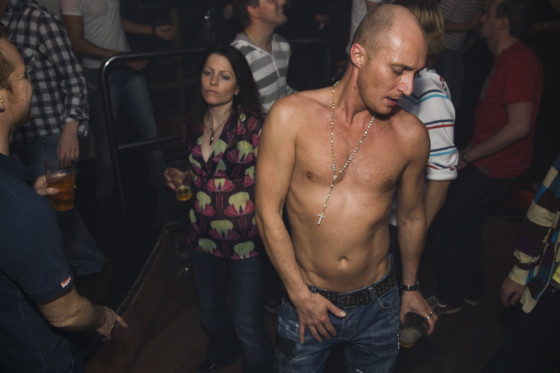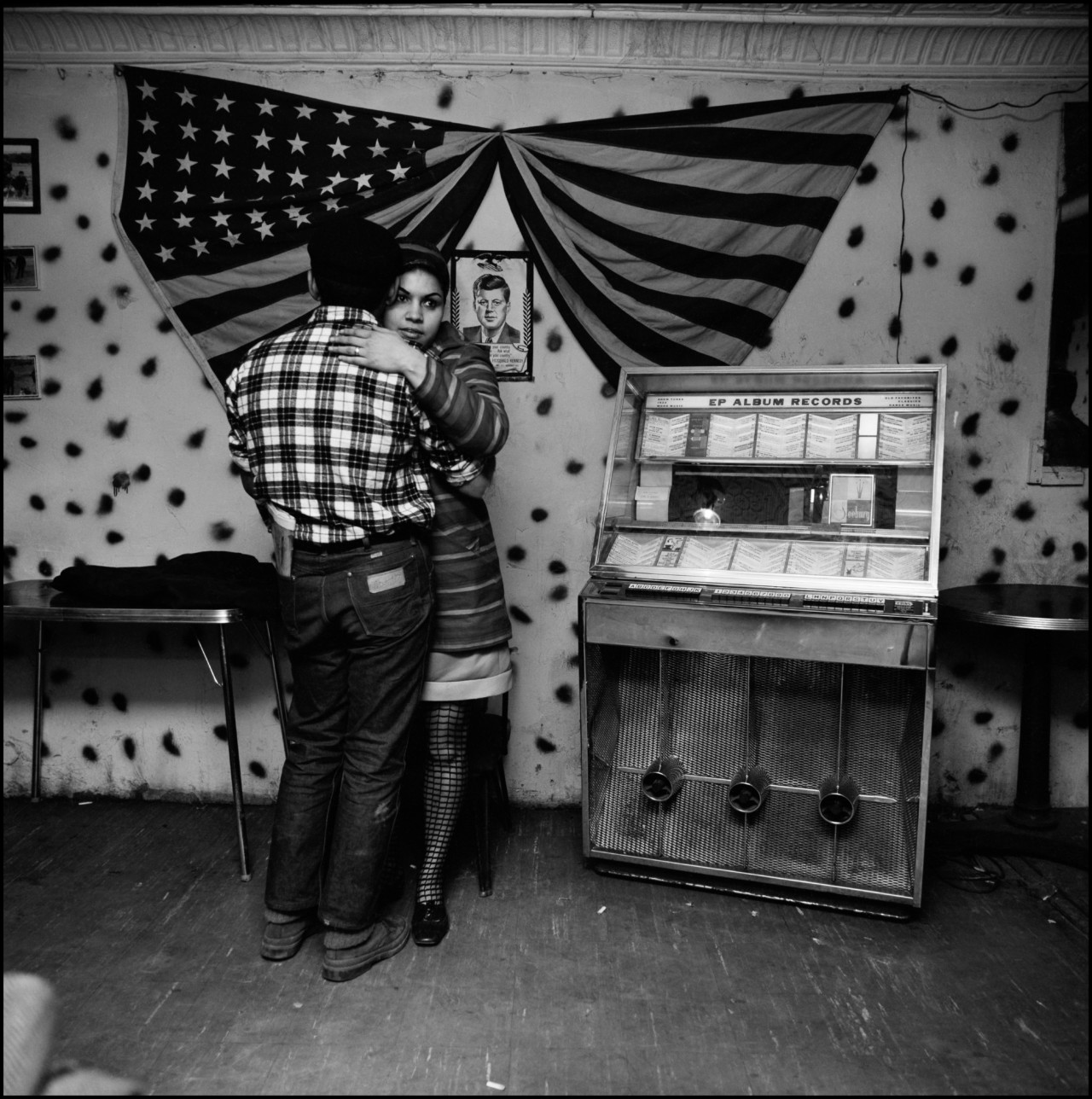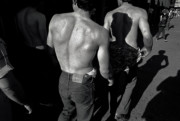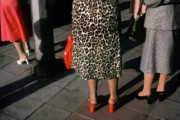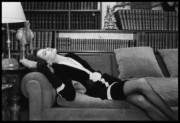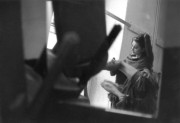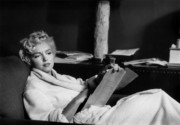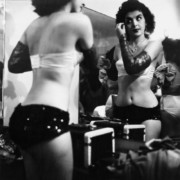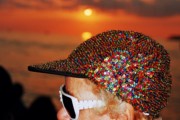Denim: Through the Magnum Archive
Rosalind Jana explores the significance of the now-ubiquitous fabric that has clothed movie stars, rebels, radicals and activists alike
As part of a new series delving into the Magnum archive, exploring its decades of documentation of vernacular style around the world, fashion writer Rosalind Jana first tackles denim. Once a visual social marker of the rural or industrial worker, then of the rebels and radicals of the 50s and 60s, before finally becoming a mainstream and ultimately a firmly quotidian material, here we explore denim through the work of Magnum photographers.
Denim is an intriguing fabric. One that, it’s been estimated, nearly half of the world’s population is wearing at any one time (in the form of blue jeans). A highly durable cotton twill weave, its origins apparently lie in a material manufactured in Nimes, France: our modern word potentially springing from the French “Serge de Nimes”. However, there are other etymological considerations at play. The term ‘jeans’ seems to originate from another fabric in Genoa, Italy, comprised of a mixture of cotton and wool. One that had been around since at least the 17th Century.
Whichever way, the textile’s complex European origins are often overshadowed by a classic tale of the American Dream. During the Californian gold-rush, businessman Levi Strauss and tailor Jacob Davis joined forces to create and patent a world-shifting design in 1873: rivet-strengthened denim trousers, ideal for miners whose work-wear kept falling apart. Known at first as overalls (the word ‘jeans’ wasn’t used by Levi’s until 1960), they exploded in popularity, with other producers muscling in to create their own designs when the patent expired in 1890.
It was over the course of the twentieth century, however, that denim’s allure grew expansively among the wider population – helped along the way by Hollywood. From cladding the legs of cowboys in 1930s Westerns to making post-war ripples in the 1950s on Marlon Brando in The Wild One, James Dean in Rebel Without a Cause, and Marilyn Monroe in River of No Return (and later, The Misfits), jeans began to accumulate a variety of meanings: symbolizing something rugged, rebellious, and increasingly sexy.
In tandem with this growth in popularity, a complex mythology of denim began to emerge: one often tied to the tale of its pioneering beginnings, suggestive of a particularly American style of individualism, but also taking on new meanings beyond this origin story. In fact, it quickly became a fabric with the power to disrupt. Some US schools banned them – anxious that, clad in denim, their students might emulate Dean or Brando’s wayward characters (and in turn worrying Levi’s sufficiently that they produced a series of “Right for School” campaigns emphasizing denim’s respectability). In Wayne Miller’s pictures of fifties classrooms, the boys in denim do have a particular attitude to them: jeans carefully paired with Chuck Taylor’s, one wearer slouching insolently against a wall with hands in pockets. Bruce Davidson’s documentation of teenage gangs in Brooklyn, plenty of them wearing jeans, also suggesting a very real correlation between disaffected youth and a taste for denim.
"In Wayne Miller’s pictures of fifties classrooms, the boys in denim do have a particular attitude to them: jeans carefully paired with Chuck Taylor’s, one wearer slouching insolently against a wall with hands in pockets."
-
In the counterculture of the 1960s and beyond, denim became a popular choice for groups ranging from hippies to punks, and bikers to protestors. Each claimed the material for themselves according to their own, carefully chosen sartorial image. Denim could still be subversive, embodying a particularly swaggering kind of status, a means of throwing off the shackles of convention. For civil rights activists, it represented a complex legacy of oppression, denim having been a material slave owners often made their enslaved workers wear (a side to denim’s all-American story that’s often overlooked.)
"In the counterculture of the 1960s and beyond, denim became a popular choice for groups ranging from hippies to punks to protestors"
-
The Magnum archives demonstrate other facets of denim’s allure. Leonard Freed captures jeans on two members of the lesbian liberation movement, accessorized with t-shirts proclaiming ‘master’ and ‘slave’. Bruno Barbey observes a trio of sharply dressed men in Tehran, one in jeans with a matching jacket.
Dennis Stock depicts the disquieting braggadocio of the biker gang Sons of Silence, uniformly clad in denim and leather. Chris Steele-Perkins focuses on the British Teds of the seventies, hair painstakingly slicked and jeans tight enough to emphasize every shimmy of hips. Rene Burri’s close-ups of jeans customized with embroidered peace signs in New York and penned phrases about love, calm and fighting for life in West Germany suggest the malleability of denim: the way it became a vehicle for messages of hope, as well as an embodiment of Western freedoms (behind the Iron Curtain, blue jeans were desperately sought after, seen to represent a USA-branded type of cool.)
These customized elements are reminiscent of Jim Goldberg’s Raised by Wolves: a photographic project from the 1990s, in which the photographer documented the misadventures and at times harrowing experiences with addiction and violence within a group of homeless adolescents in California. One of his main subjects, ‘Tweeky Dave,’ owned a denim jacket he’d scrawled colourful patches and recognizable symbols like the peace sign on, alongside more hard-edged declarations like ‘fuck the system up the ass’.
It served as a material reminder of the world Dave existed in: borne out of his very singular surroundings and community. In 2016, when Kanye West presented a near-copy on the catwalk, Goldberg decried it for being entirely shorn of original meaning. In viewing it as “a fashion item,” the complex history of the garment was lost, according to the photographer.
Denim’s history is a long and sprawling one. A history in which context is both crucial and hugely varied: from perfectly belted jeans on a dancer in Senegal to kids in denim shorts swinging upside down in Cuba, two friends sprawled on a sidewalk in sunny San Francisco to sweaty men in a Brighton gay club… A history (and present) that spans trends, cultures, comfort, desirability, work, play, commerce, and plenty of idealized notions of what happens to us when we put on a particular garment. Both intensely practical and highly mythic, denim continues to compel, however – and wherever – it’s worn.


